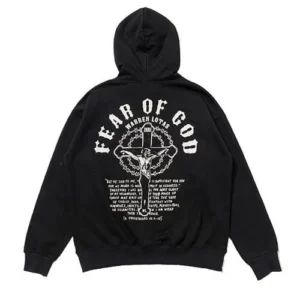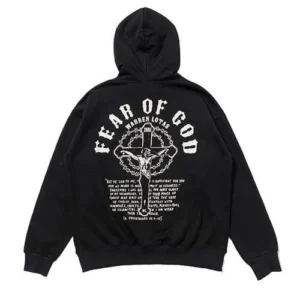A Modern Solution for High-Impact Packaging and Design
In an era where packaging and printed materials must capture attention quickly, cold foil printing has emerged as a powerful technology that blends beauty with efficiency. Known for producing high-quality metallic effects without the need for expensive stamping dies or heated presses, cold foil is rapidly becoming the go-to choice for brands and printers aiming to elevate the visual appeal of their products.
From luxury cosmetics and wine labels to promotional brochures and magazine covers, cold foil offers a fast, flexible, and cost-effective way to add dazzling metallic accents to printed materials. But what exactly is cold foil? How does it work, and why is it gaining so much traction?
What is Cold Foil?
Cold foil is a type of metallic foil used in the printing process to create reflective, shiny designs on packaging and printed materials. Unlike hot foil stamping, which uses heat and pressure, cold foil is applied using a UV-curable adhesive and does not require a heated die.
It allows for on-press application during the printing process, making it ideal for short-run jobs and complex designs that demand quick turnaround and high quality.
How Does Cold Foil Work?
The cold foil process involves a few key steps:
- Printing the Adhesive: A printing plate (typically flexo or offset) is used to apply a UV-curable adhesive to the substrate (paper, film, or label) in the desired foil pattern.
- Foil Transfer: Metallic foil is unwound and pressed onto the adhesive using a nip roller. The foil adheres only to the areas with adhesive.
- Curing: A UV lamp immediately cures the adhesive, fixing the foil to the substrate.
- Foil Waste Removal: The unused foil is rewound and discarded or recycled, while the finished material moves on for further printing, coating, or cutting.
This inline process is quick and seamless, often integrated into a single-pass printing system.
Advantages of Cold Foil Technology
1. Design Flexibility
Cold foil allows for fine details, gradients, and micro text that hot foil stamping can’t achieve easily. It can be overprinted with inks to create an infinite variety of metallic colors and holographic effects.
2. Cost-Effective for Short Runs
Because it doesn’t require metal dies or long setup times, cold foil is ideal for short and medium print runs—perfect for personalized packaging, seasonal designs, or promotional campaigns.
3. Fast Turnaround
With its inline application, cold foil dramatically reduces production time compared to traditional hot stamping. There’s no need to wait for separate foiling passes or tooling changes.
4. Eco-Friendly
Cold foil is often seen as a more sustainable alternative to laminated metallic boards or hot foil stamping. It results in less material waste and can be paired with recyclable substrates.
5. Compatibility
Cold foil is compatible with a wide range of substrates including paper, board, and flexible films. It also works well with both offset and flexographic printing systems.
Common Applications of Cold Foil
- Luxury Packaging: Cosmetics, perfumes, premium chocolates, and spirits use cold foil to signal high value and attract attention.
- Labels: Cold foil is widely used in wine, beer, and beverage labels, offering a rich, elegant finish that stands out on shelves.
- Publishing: Magazine covers, catalogs, and high-end brochures use cold foil for titles, logos, and decorative elements.
- Promotional Materials: Business cards, folders, and mailers often incorporate cold foil to convey a premium feel.
- Security and Anti-Counterfeiting: Specialty foils with holographic patterns can be used for authentication and tamper-proof packaging.
Types of Cold Foil
Cold foil comes in various finishes and textures:
- Silver Foil: The most commonly used type, providing a base for overprinting to achieve various metallic hues.
- Gold Foil: Popular in cosmetics and gourmet food packaging.
- Holographic Foil: Used for eye-catching visual effects or anti-counterfeiting features.
- Matte or Satin Foils: Offer a subtle metallic sheen for sophisticated branding.
Each type can be customized with different levels of gloss, reflectivity, and durability depending on the application.
Cold Foil vs. Hot Foil: What’s the Difference?
| Feature | Cold Foil | Hot Foil |
| Process | Inline, uses UV-curable adhesive | Offline, uses heat and metal dies |
| Setup Time | Minimal | Long (requires die preparation) |
| Design Detail | Excellent for fine details and gradients | Best for solid, bold areas |
| Cost for Short Runs | More economical | More expensive due to tooling |
| Substrate Sensitivity | Better for heat-sensitive materials | Can warp thin substrates |
| Environmental Impact | Lower material waste | Requires energy for heating |
While both have their place, cold foil is often chosen for faster, more flexible jobs where cost and design complexity are key.
Trends and Innovations in Cold Foil Printing
1. Digital Cold Foiling
Emerging digital cold foil systems allow for variable data foiling, ideal for personalized packaging or targeted marketing campaigns.
2. Sustainability Focus
Brands are moving away from metallized boards to recyclable substrates combined with cold foil—retaining a premium look while meeting eco-conscious consumer expectations.
3. Hybrid Printing Systems
Print shops are increasingly integrating cold foil into hybrid presses (digital + flexo) to maximize productivity and offer new creative possibilities.
4. Interactive Packaging
Cold foil, when combined with smart packaging elements like QR codes or NFC tags, creates engaging, high-end experiences for consumers.
Conclusion
Cold foil is no longer just a niche technique—it’s a mainstream solution for brands that want to stand out without sacrificing cost, speed, or environmental responsibility. Whether you’re designing an elegant wine label or launching a limited-edition product line, cold foil can give your packaging the shine and sophistication it needs to succeed.
As technology continues to evolve, expect cold foil to play an even larger role in the intersection of aesthetics, functionality, and sustainable packaging.


